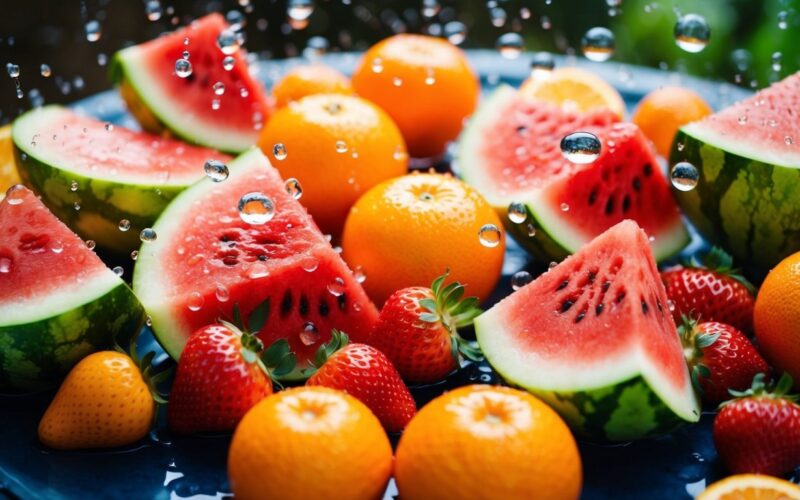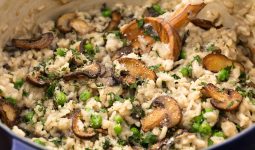Feeling thirsty? You might want to grab a piece of fruit instead of reaching for that glass of water.
Many fruits are packed with high water content, making them a tasty and refreshing way to stay hydrated.
Eating fruits high in water can help you meet your daily fluid needs while also providing essential vitamins, minerals, and fiber.
Did you know that some fruits are over 90% water? It’s true! Watermelon, strawberries, and grapefruit are just a few examples of fruits that can quench your thirst and keep you hydrated.
These juicy treats not only taste great but also offer a range of health benefits.
Next time you’re looking for a hydrating snack, think beyond the water bottle.
Hydrating fruits can be a fun and delicious way to boost your fluid intake.
Plus, you’ll get the added bonus of extra nutrients to keep your body happy and healthy.
Let’s explore some of the top water-rich fruits and how they can benefit you.
Watermelon

Watermelon is a super hydrating fruit that’s perfect for quenching your thirst on a hot day. It’s not just refreshing – it’s packed with water too!
Did you know watermelon is 91% water? That’s a lot of hydration in every bite.
When you eat watermelon, you’re basically drinking water and eating fruit at the same time.
But watermelon isn’t just water. It’s also full of good stuff for your body. You’ll get vitamins C and A, plus some magnesium when you munch on this juicy treat.
Watermelon is great for a quick energy boost. It doesn’t have much fiber, so your body can use its natural sugars fast. This makes it a yummy snack before or after exercise.
Want to get the most hydration from your watermelon? Try these tips:
Watermelon isn’t just for summer picnics. You can enjoy its hydrating benefits all year round.
Add it to fruit salads, freeze it for a cool treat, or just eat it as is. Your body will thank you for the extra hydration!
Strawberries

Strawberries are a tasty treat that can help you stay hydrated. These red berries are packed with water, making them a great snack on hot days.
Did you know that strawberries are 91% water? That’s a lot of liquid in such a small package!
Eating strawberries can be a yummy way to boost your water intake.
They’re perfect for adding to your diet, especially when you’re trying to drink more fluids.
Here are some fun ways to enjoy strawberries:
- Eat them fresh as a snack
- Add them to your breakfast cereal
- Blend them into a smoothie
- Top your yogurt with sliced strawberries
Strawberries aren’t just water-rich. They’re also full of good stuff like vitamin C and fiber.
This makes them a healthy choice for satisfying your sweet tooth. You can find strawberries easily in most grocery stores.
They’re often available year-round, but they taste best when they’re in season during spring and early summer.
Remember to wash your strawberries before eating them. This helps remove any dirt or germs that might be on the surface.
Cantaloupe

Cantaloupe is a juicy and refreshing fruit that’s perfect for hot summer days. You’ll love its sweet flavor and high water content.
This melon is about 90% water, making it one of the juiciest fruits you can eat. It’s a great choice when you want to stay hydrated.
Cantaloupe isn’t just water, though. It’s packed with nutrients too. You’ll get vitamins A and C, potassium, and fiber when you eat this fruit.
The orange color of cantaloupe comes from beta-carotene. This is good for your eyes and skin.
You can eat cantaloupe in many ways:
- Cut into cubes for a quick snack
- Add to fruit salads
- Blend into smoothies
- Freeze for a cool treat
Cantaloupe can help you maintain healthy blood pressure due to its water and potassium content. It’s a smart choice if you’re watching your heart health.
When picking a cantaloupe, look for one that feels heavy for its size. The rind should have a raised, netted pattern.
A ripe cantaloupe will smell sweet at the stem end. Remember to wash the outside of your cantaloupe before cutting it.
This helps prevent any dirt or bacteria from getting into the fruit when you slice it.
Oranges
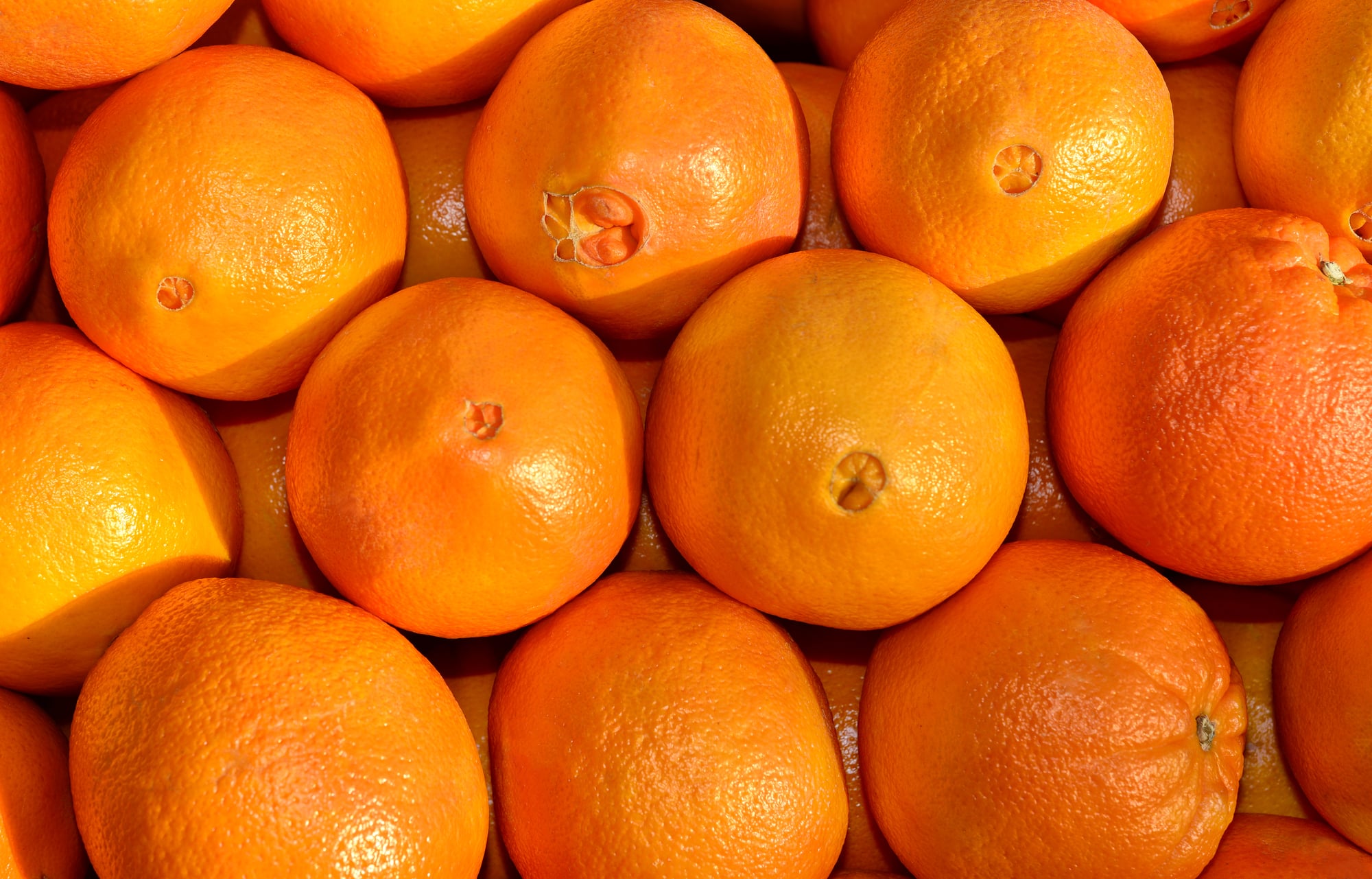
Oranges are a juicy fruit that can help keep you hydrated. They’re packed with water, making them a great snack when you’re thirsty.
Did you know oranges are 88% water? That’s a lot of liquid in one small package!
When you bite into an orange, you’ll notice how refreshing it is. The juice bursts in your mouth, quenching your thirst instantly.
Oranges aren’t just tasty – they’re good for you too. They’re full of vitamin C, which helps your immune system stay strong.
Here are some fun ways to enjoy oranges:
- Eat them as a snack
- Squeeze them for fresh juice
- Add slices to your water for flavor
- Use them in fruit salads
Try keeping a few oranges in your fridge. They’re perfect for those hot days when you need a cool, hydrating treat.
Remember, eating water-rich fruits like oranges can help you stay hydrated throughout the day. It’s an easy and yummy way to get more fluids in your diet.
Pineapple

Pineapple is a tropical fruit that’s not only delicious but also packed with water. You might be surprised to learn that this sweet treat is 87% water.
When you bite into a juicy pineapple, you’re getting more than just great taste.
You’re also hydrating your body. This makes it a perfect snack for hot summer days or after a workout.
Pineapples are also loaded with nutrients. They contain:
- Vitamin A
- Vitamin C
- Thiamin
- Calcium
- Potassium
- Phosphorus
- Manganese
- Folate
- Fiber
One unique thing about pineapples is that they contain bromelain. This is a special enzyme that can help with digestion and may have other health benefits.
You can enjoy pineapple in many ways. Eat it fresh, add it to smoothies, or grill it for a tasty treat.
No matter how you choose to eat it, you’ll be getting a good dose of hydration along with great flavor.
Peaches
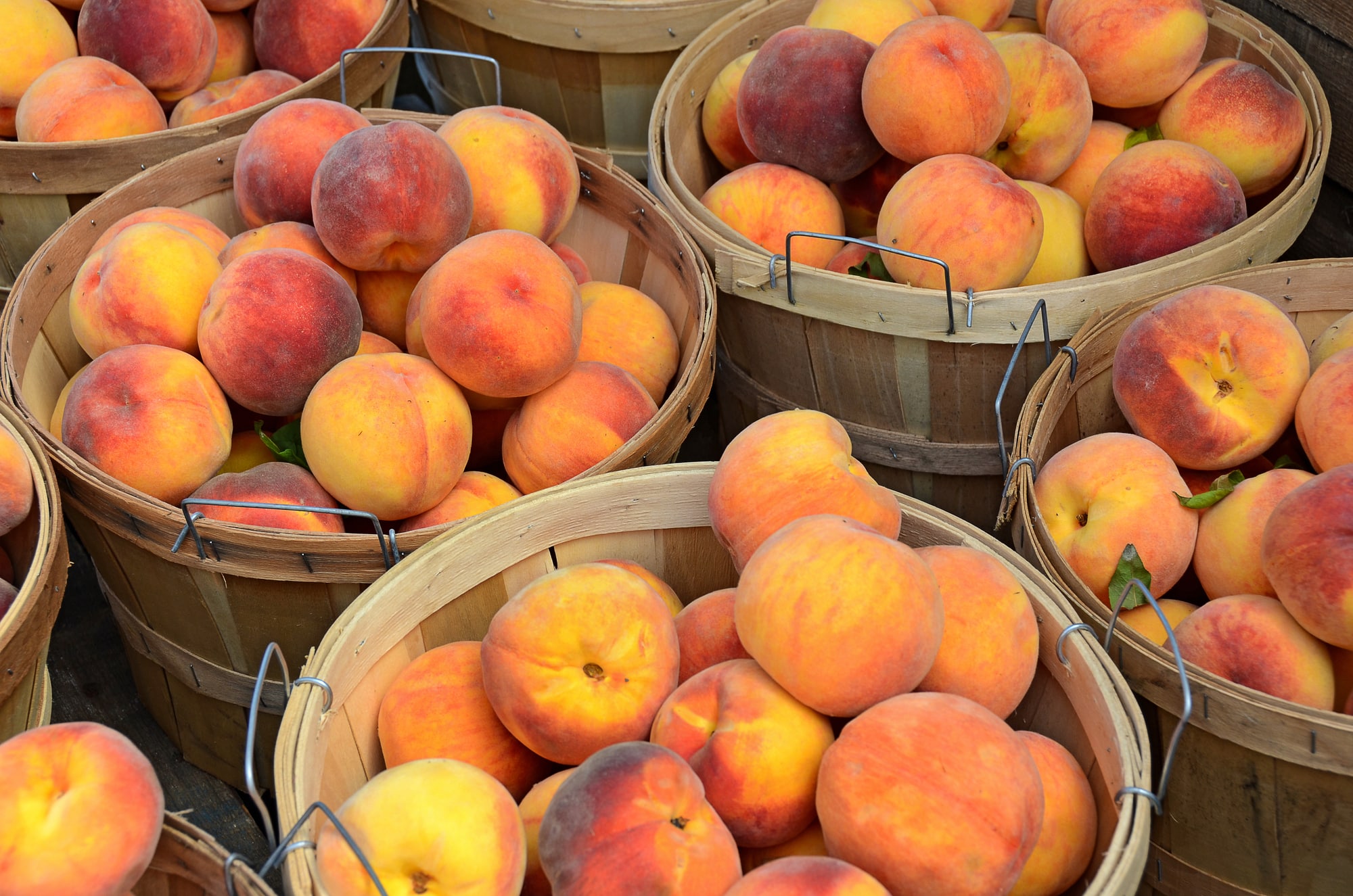
Peaches are a yummy summer fruit that can help keep you hydrated. These fuzzy stone fruits are packed with water, making them a great snack on hot days.
Did you know peaches are 88% water? That’s a lot of liquid in one sweet package! When you bite into a juicy peach, you’re not just enjoying the taste – you’re also giving your body some much-needed hydration.
But peaches offer more than just water. They’re full of good stuff like:
- Vitamin A
- Vitamin C
- B vitamins
- Potassium
The skin of a peach is especially good for you. It has something called chlorogenic acid, which helps your body process sugar more slowly after you eat.
Peaches are versatile too. You can eat them fresh, add them to smoothies, or use them in baked goods.
Their sweet flavor and high water content make them perfect for refreshing summer treats.
Next time you’re feeling thirsty, why not reach for a peach? It’s a tasty way to quench your thirst and get some extra nutrients too!
Grapefruit
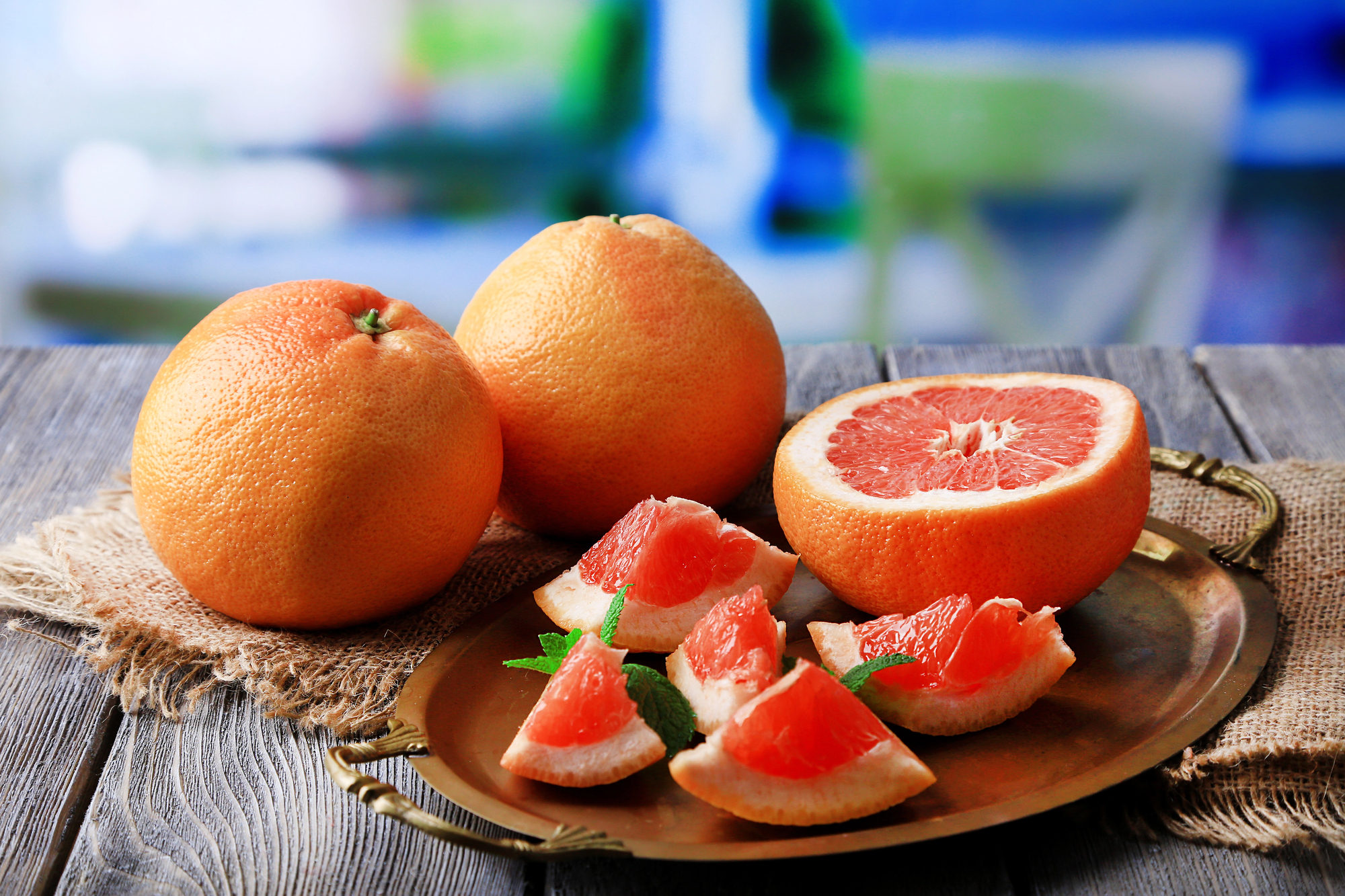
Want a juicy, hydrating fruit? Try grapefruit! This citrus powerhouse is 91% water, making it one of the most hydrating fruits you can eat.
Grapefruit comes in different colors. You’ll find pink, red, and white varieties. Each has its own unique flavor, ranging from sweet to tart.
Not only is grapefruit great for hydration, but it’s also packed with nutrients.
It’s a good source of vitamin C, which helps boost your immune system.
You’ll get a dose of fiber when you eat grapefruit too. A small grapefruit has about 2.2 grams of fiber, which is 8% of your daily value.
Grapefruit can be enjoyed in many ways:
- Eat it fresh
- Add it to salads
- Squeeze it for juice
- Use it in smoothies
Remember, grapefruit can interact with some medications. If you’re taking any, check with your doctor before adding grapefruit to your diet.
Next time you’re looking for a refreshing snack, reach for a grapefruit. It’s a tasty way to stay hydrated and get some important nutrients too!
Cucumber

Did you know cucumbers are actually a fruit? They’re part of the same family as melons and squash. Cucumbers are 96% water, making them super hydrating.
Eating cucumbers can help you stay cool and refreshed. They’re great in salads or as a snack on hot days. You can even add cucumber slices to your water for a tasty twist.
Cucumbers are low in calories but pack a nutritional punch. They contain vitamins K and C, along with potassium and magnesium.
These nutrients support your bone health and immune system.
Here are some ways to enjoy cucumbers:
- Sliced in sandwiches
- Diced in Greek salad
- Blended into cold soup
- Pickled for a tangy treat
Cucumbers might even boost your memory and mood. Their high water content helps keep your brain hydrated, which is crucial for good mental function.
Try adding cucumbers to your diet for a crisp, refreshing way to stay hydrated. They’re easy to find, affordable, and versatile in the kitchen.
Apples
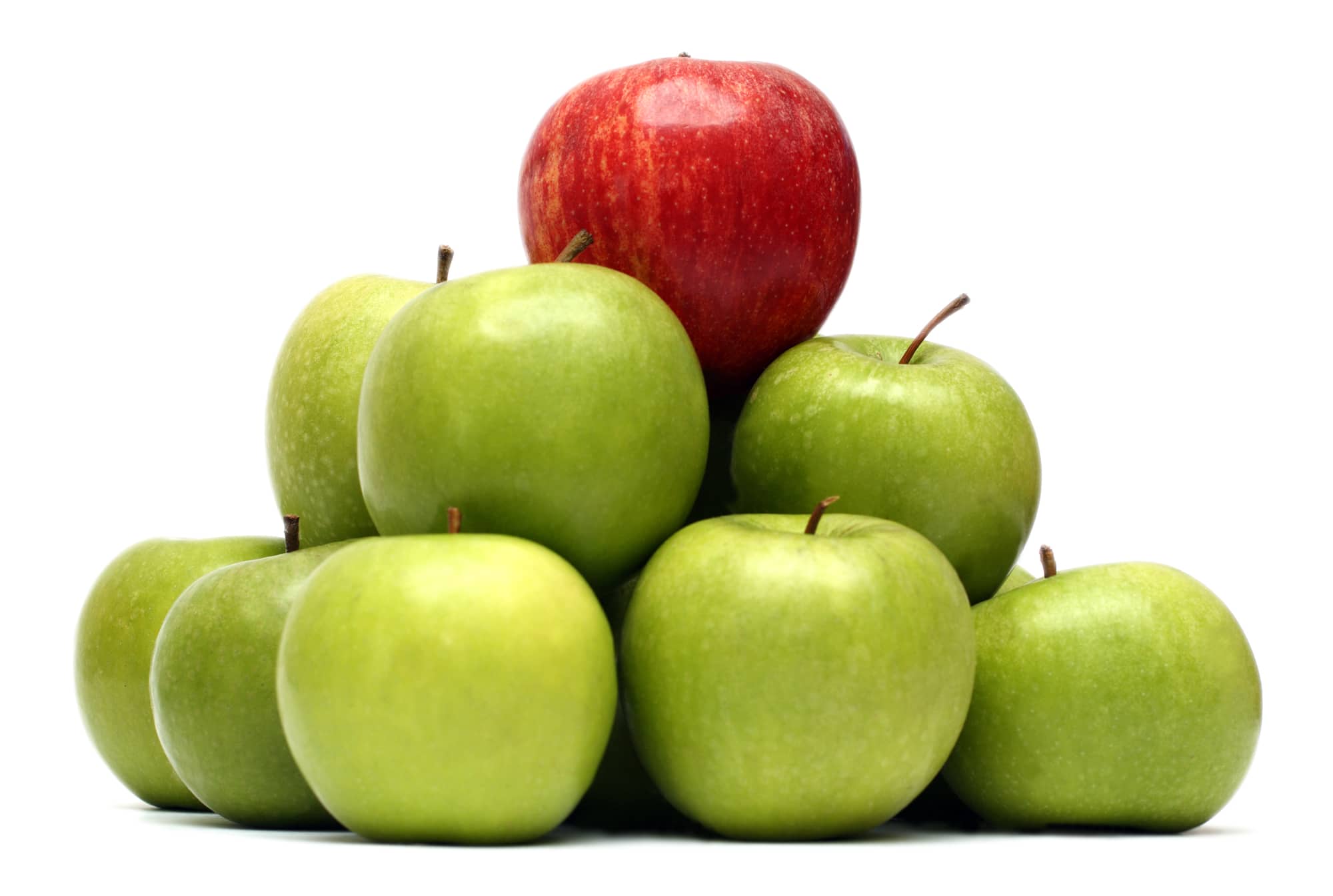
Apples are a tasty fruit that can help keep you hydrated. They contain about 84% water, making them a good choice for quenching your thirst.
When you bite into a crisp apple, you’re not just enjoying its sweet flavor.
You’re also getting a dose of important nutrients. Apples are packed with:
- Fiber
- Vitamin C
- Antioxidants
These nutrients can be good for your health. Eating apples might help lower your blood sugar levels and benefit your heart.
There are many ways to enjoy apples. You can eat them raw as a snack, slice them into salads, or bake them into pies.
Apple juice is another option, but whole apples are better for you.
When choosing apples, pick ones that feel firm and have smooth, unblemished skin. You can store them in your fridge to keep them fresh longer.
Remember, the skin of the apple contains many nutrients. So, it’s best to eat apples with the skin on when you can.
Pears

Pears are a delicious and juicy fruit that can help keep you hydrated. They come in many varieties, with Bartlett, Bosc, and D’Anjou being among the most popular.
Did you know that pears have a high water content? In fact, Bosc pears contain about 84% water.
This makes them a great choice when you’re looking for a refreshing snack.
Here are some fun facts about pears:
- They’re shaped like a teardrop
- Their skin can be green, yellow, red, or brown
- You can eat the skin – it’s full of nutrients!
Pears aren’t just tasty; they’re good for you too. A medium-sized pear provides:
- 101 calories
- 1 gram of protein
- Lots of fiber
When you’re feeling thirsty, try reaching for a pear instead of a glass of water.
It’s a yummy way to stay hydrated and get some extra nutrients. Remember to wash your pears before eating them.
You can enjoy them raw, add them to salads, or even bake them into desserts. They’re versatile and always a crowd-pleaser!
Tomatoes

You might be surprised to learn that tomatoes are actually fruits! They’re also packed with water, making them a great choice to help you stay hydrated.
Tomatoes are 93% water, which means they’re one of the most water-rich foods you can eat. This high water content helps keep you feeling full and satisfied.
But that’s not all – tomatoes are also nutritious. They’re a good source of fiber, giving you about 1.5 grams per average-sized tomato. Most of this fiber is insoluble, which is great for your digestion.
Tomatoes come in many varieties, from tiny cherry tomatoes to big beefsteak ones.
You can eat them raw in salads, sandwiches, or as a snack. They’re also delicious cooked in sauces, soups, and stews.
Here are some quick tomato facts:
- Low in calories
- High in vitamins A and C
- Contains antioxidants like lycopene
So next time you’re looking for a hydrating snack, grab a juicy tomato. Your body will thank you for the water and nutrients!
Grapes

Did you know grapes are a great source of water? These juicy little fruits are packed with hydration.
Grapes are 70% to 80% water, making them an excellent snack when you’re feeling thirsty.
When you eat a cup of grapes, you’re getting about 5-7 ounces of water.
That’s a good amount to help keep you hydrated throughout the day.
But there’s more to grapes than just water. They’re also full of vitamins and minerals that are good for you.
Here’s what you’ll find in grapes:
- Vitamin C
- Vitamin K
- Vitamin B6
- Potassium
- Copper
These nutrients help support your immune system and heart health.
Red grapes and green grapes are both hydrating, but there’s a small difference.
Red grapes usually have more water than green ones. They also have more antioxidants, which are good for your body.
Whether you choose grapes with seeds or without, you’ll still get the same hydration benefits.
So go ahead and grab a handful of grapes next time you’re feeling thirsty.
They’re a tasty way to quench your thirst and get some extra nutrients too!
Mangoes

Mangoes are a tasty fruit that can help keep you hydrated. They have a good amount of water in them, which is great for staying refreshed.
One cup of mango has about 70 calories. It’s a sweet treat that won’t make you feel guilty about eating it.
Mangoes are full of good stuff for your body. They have vitamin A, which helps your immune system stay strong. You’ll also get some fiber when you eat a mango.
Here are some fun ways to enjoy mangoes:
- Eat them fresh as a snack
- Add them to smoothies
- Use them in salsa
- Put them in fruit salads
Mangoes can be a bit tricky to cut. Try slicing them lengthwise around the pit. Then, cut a grid pattern in the flesh and scoop it out with a spoon.
You can find mangoes in most grocery stores. They’re often available year-round, but they taste best when they’re in season.
When picking a mango, give it a gentle squeeze. If it’s a little soft, it’s ready to eat. If it’s too hard, let it sit out for a few days to ripen.
Blueberries

Blueberries are a tasty fruit that can help keep you hydrated. These small blue gems are about 85% water, making them a great snack to quench your thirst.
But that’s not all! Blueberries are packed with goodness. They’re low in calories but high in nutrients.
A cup of blueberries has only 80 calories but gives you 25% of your daily vitamin C needs.
Did you know blueberries are full of antioxidants? These little berries might have the highest antioxidant levels of all common fruits and veggies. Antioxidants help protect your body from damage.
Here’s a quick list of blueberry benefits:
- High water content
- Low in calories
- Rich in vitamin C
- Packed with antioxidants
- Good source of fiber
Eating blueberries can be a smart choice if you’re watching your weight.
They fill you up quickly without adding many calories. Plus, their natural sweetness can help satisfy your sugar cravings in a healthy way.
Try adding blueberries to your morning yogurt or oatmeal. You can also toss them in a salad or blend them into a smoothie.
Fresh or frozen, blueberries are a delicious way to stay hydrated and healthy.
Raspberries
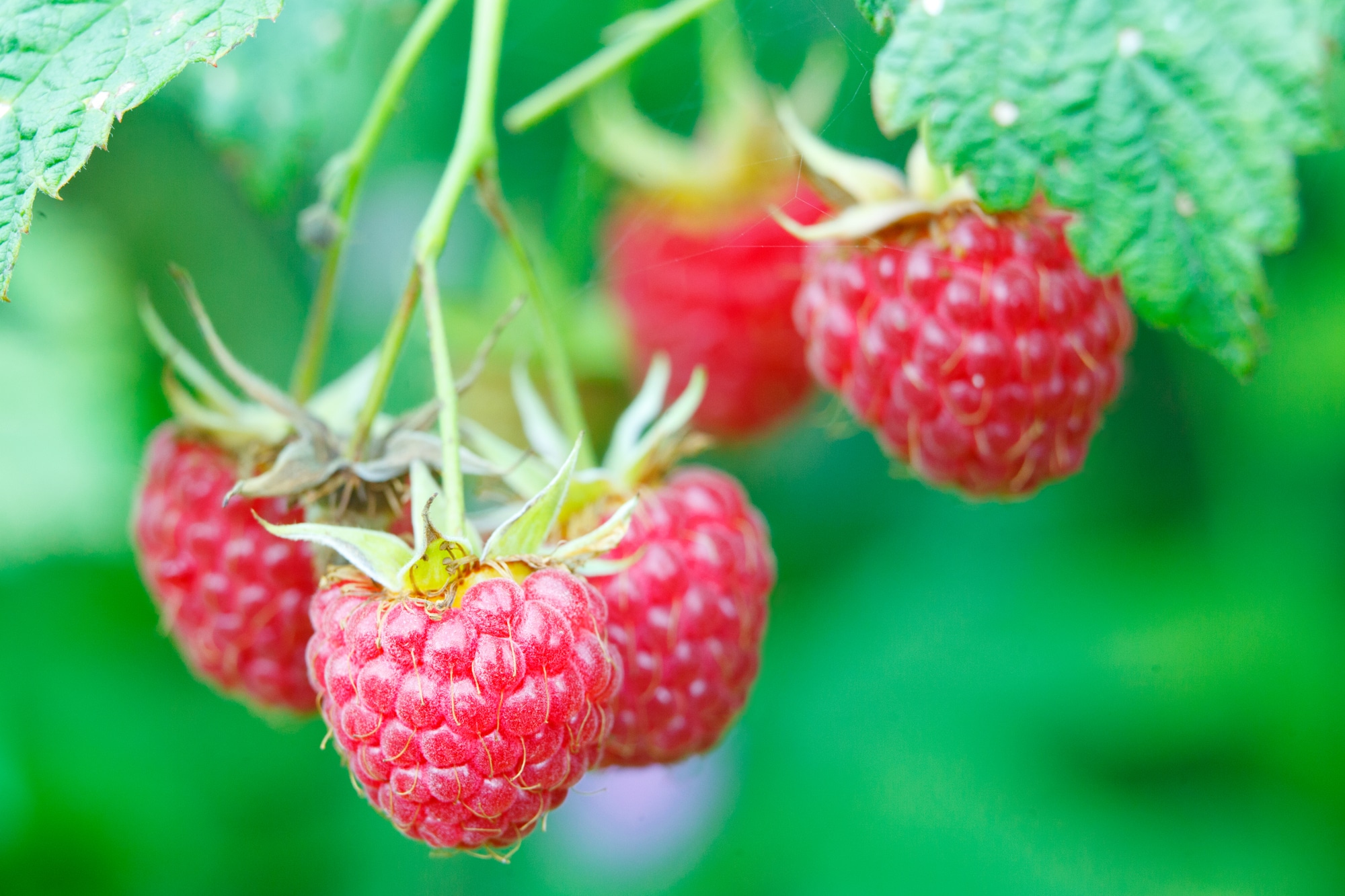
Raspberries are a tasty fruit that can help quench your thirst. They’re packed with water, making them a great snack when you want to stay hydrated.
These tiny berries have a high water content of 86%. This means when you eat raspberries, you’re getting a good amount of fluid along with their sweet flavor.
Raspberries aren’t just water, though. They’re also full of good stuff for your body.
You’ll get vitamin C when you munch on these berries. This vitamin helps keep your immune system strong.
Here’s a quick look at what you get in a cup of raspberries:
- Water: About 105 grams
- Vitamin C: More than half of what you need daily
- Fiber: To help keep your tummy happy
Next time you’re feeling thirsty, try grabbing a handful of raspberries.
They’re a yummy way to add some water to your day. Plus, you get extra nutrients that plain water doesn’t have.
Remember, while raspberries are great for hydration, they shouldn’t replace drinking water. Think of them as a tasty bonus to help you stay hydrated.
Plums

Plums are a tasty fruit that can help quench your thirst. They’re 88% water, making them a great choice when you want to stay hydrated.
These juicy fruits come in different colors. You might find red, purple, or yellow plums at your local store. Each variety has its own unique flavor.
Plums are not just water-rich. They also pack a nutritional punch. Here are some benefits:
- High in vitamins C and A
- Good source of fiber
- Low in calories
You can enjoy plums in many ways. Eat them fresh as a snack, add them to your morning yogurt, or bake them into a delicious pie.
When picking plums, look for ones that are slightly soft to the touch. They should have a sweet aroma too. This means they’re ripe and ready to eat.
Remember to wash your plums before eating. Even though they have a thin skin, it’s best to clean them to remove any dirt or pesticides.
Try freezing plum slices for a cool treat on hot days. They make a refreshing and hydrating snack that’s perfect for summer.
Kiwifruit
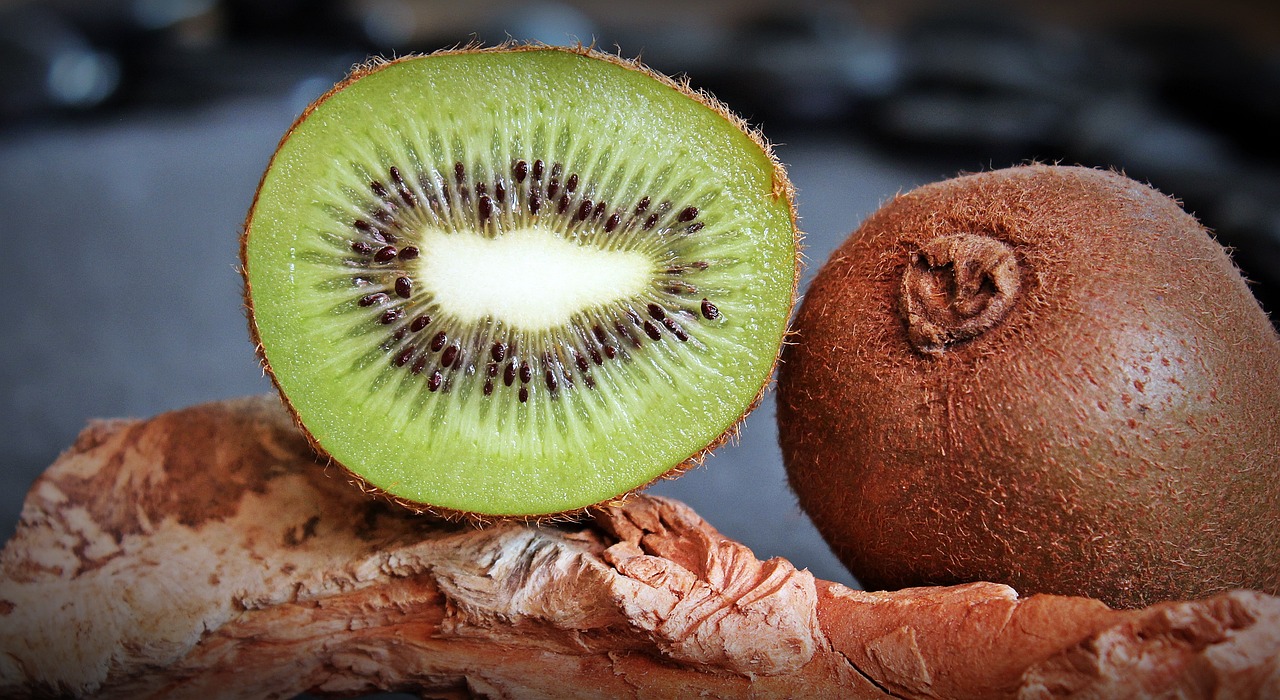
Kiwifruit is a small, fuzzy fruit packed with water and nutrients. It’s a great choice when you’re looking for hydrating fruits.
Kiwis are about 83% water, making them a good source of hydration.
When you eat a kiwi, you’re not just quenching your thirst – you’re also getting a boost of vitamins and minerals.
These little fruits are nutritional powerhouses. They’re rich in:
- Vitamin C
- Vitamin E
- Fiber
- Potassium
Kiwis have a unique sweet-tart flavor that many people love. You can eat them on their own or add them to fruit salads and smoothies.
Did you know kiwis can help your digestion? They contain enzymes that may aid in breaking down food. This could help you feel more comfortable after meals.
Eating kiwis might also be good for your heart. Some studies suggest they could help lower blood pressure and reduce the risk of blood clots.
You can enjoy kiwis in many ways:
- Slice them in half and scoop out the flesh
- Peel and slice them for a snack
- Add them to your morning cereal or yogurt
- Blend them into a smoothie
Try adding kiwis to your diet for a tasty way to stay hydrated and healthy!
Cherries
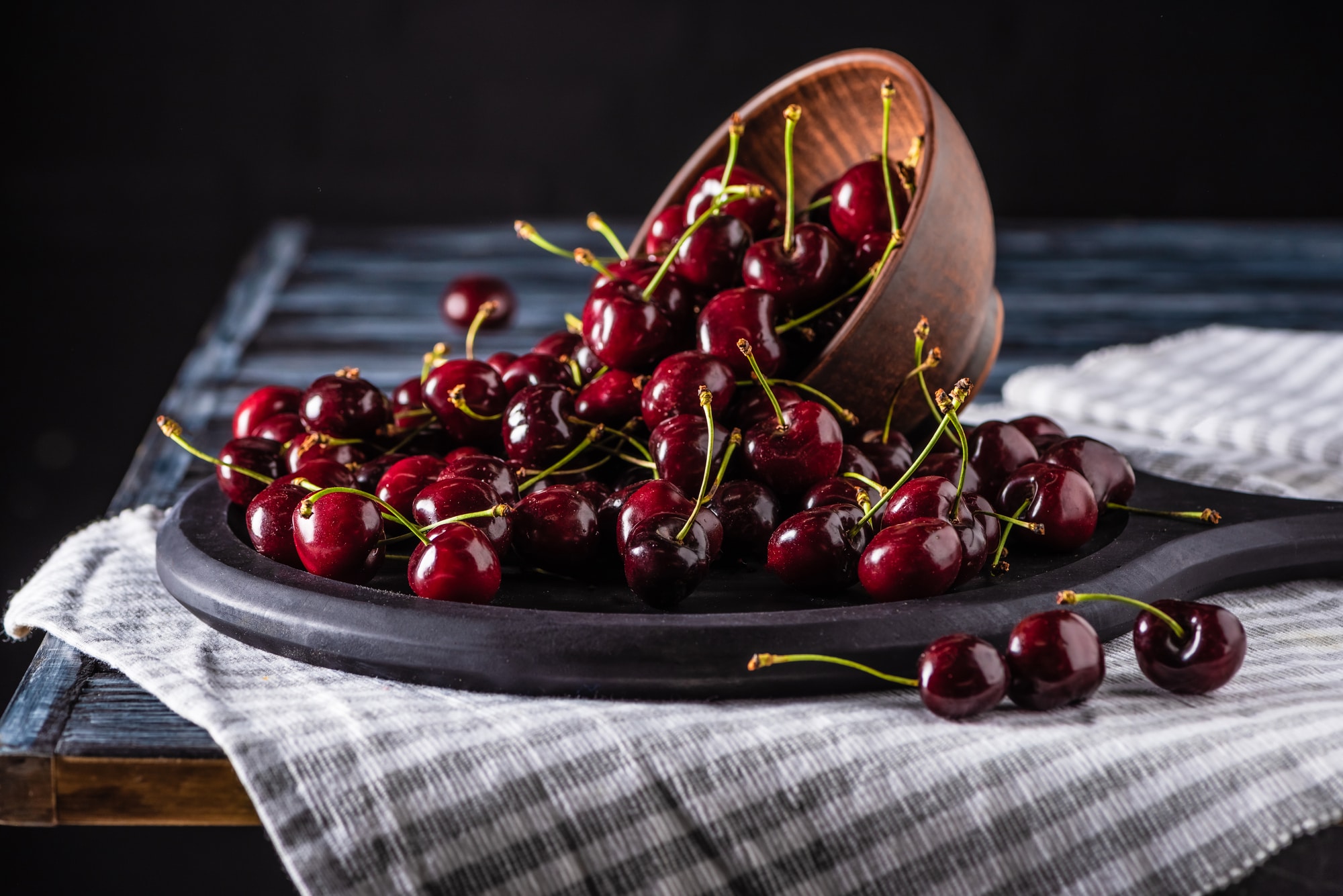
Cherries are a tasty fruit that can help quench your thirst. They contain about 80% water, making them a good choice for hydration.
These small, round fruits come in different varieties. You might be familiar with sweet cherries or tart cherries. Both types can add flavor and moisture to your diet.
Cherries offer more than just water. They’re packed with nutrients too. You’ll find vitamins C and A, along with potassium and fiber in these little fruits.
Some studies suggest cherries may have health benefits. They might help reduce inflammation and improve sleep.
Cherries contain antioxidants that could support your overall health.
You can enjoy cherries in many ways:
- Eat them fresh as a snack
- Add them to yogurt or oatmeal
- Use them in smoothies
- Bake them into pies or cobblers
Frozen cherries work well too. They’re great for smoothies and can be just as nutritious as fresh ones.
Remember, while cherries are hydrating, they shouldn’t replace water in your diet. Think of them as a tasty way to get some extra fluid and nutrients.
Papaya
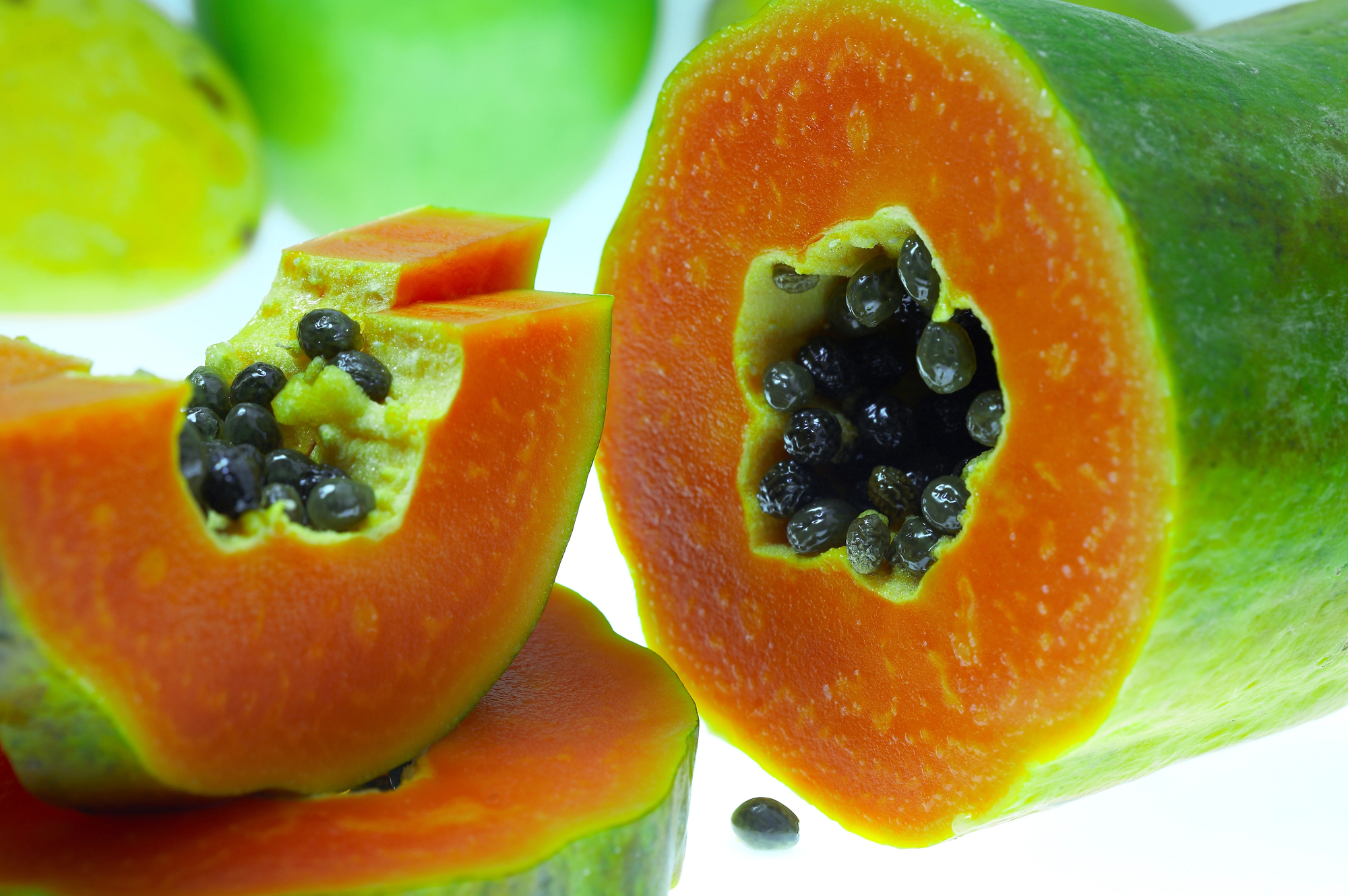
Papaya is a tropical fruit that’s packed with water. This juicy fruit is 88.1% water, making it a great choice to quench your thirst and stay hydrated.
When you bite into a ripe papaya, you’ll notice its soft, buttery texture. The fruit’s high water content gives it a refreshing taste, perfect for hot summer days.
Papayas aren’t just water-rich. They’re also full of nutrients. You’ll get a good dose of vitamins C and A when you eat this fruit.
These vitamins help boost your immune system and keep your eyes healthy.
The fruit’s water and fiber content work together to keep your digestive system running smoothly. Papaya can help prevent constipation and promote a healthy gut.
When picking a papaya, look for one that’s slightly soft with a yellowish-orange skin.
Avoid fruits with dark or soft spots, as these might be signs of anthracnose, a fungal disease that affects papayas.
You can enjoy papaya in many ways:
- Eat it fresh
- Add it to fruit salads
- Blend it into smoothies
- Use it in savory dishes
Remember, papaya contains an enzyme called papain. This enzyme can help tenderize meat, making papaya a useful ingredient in marinades.
Lychee

Lychee is a tropical fruit that’s packed with water. In fact, 82% of a lychee is water. This makes it a great snack to help keep you hydrated on hot days.
When you bite into a lychee, you’ll notice its juicy texture. The fruit has a translucent white flesh that’s surrounded by a thin, bumpy red skin.
Lychees are small, but they pack a nutritional punch. They’re rich in vitamin C, providing 119% of your daily needs in just a 100-gram serving. That’s about 8-10 lychees.
Here are some other nutrients you’ll find in lychees:
- Potassium
- Copper
- Vitamin B2 (riboflavin)
- Iron
- Magnesium
Lychees also contain antioxidants that may help protect your body from harmful free radicals. These include polyphenols and flavonoids.
You can eat lychees fresh, or add them to fruit salads and desserts. They have a sweet, floral taste that many people enjoy.
Just be careful if you have allergies – some people may be allergic to lychee proteins.
Next time you’re looking for a hydrating fruit snack, give lychees a try. They’re not just refreshing, but also nutritious and delicious!




